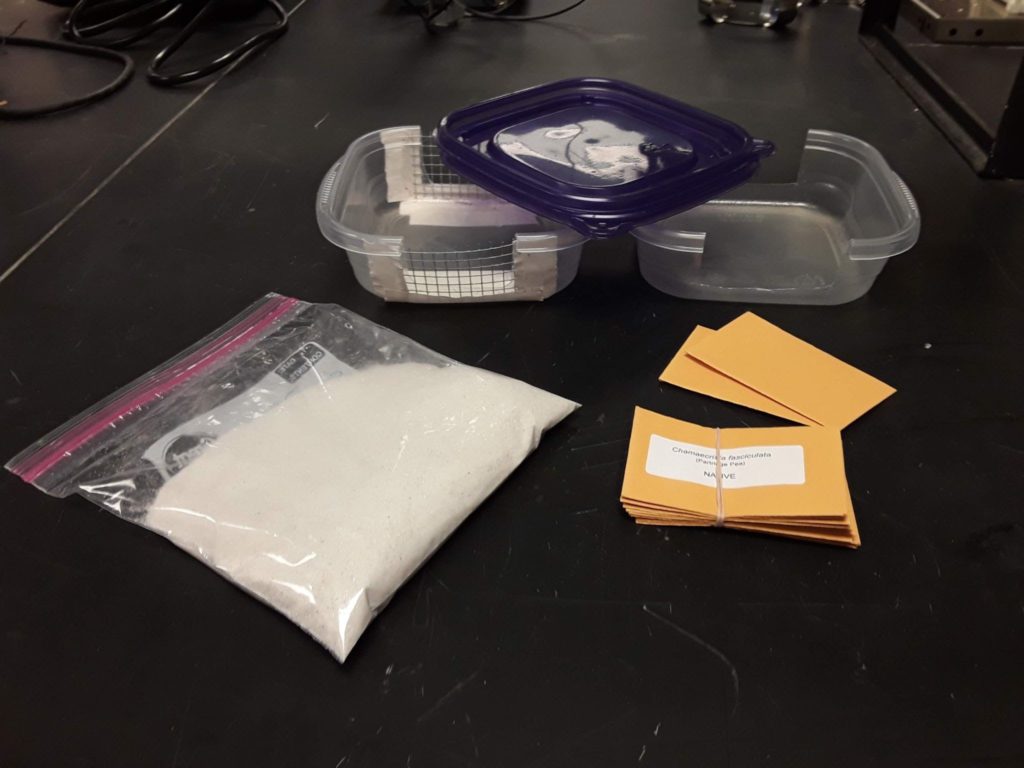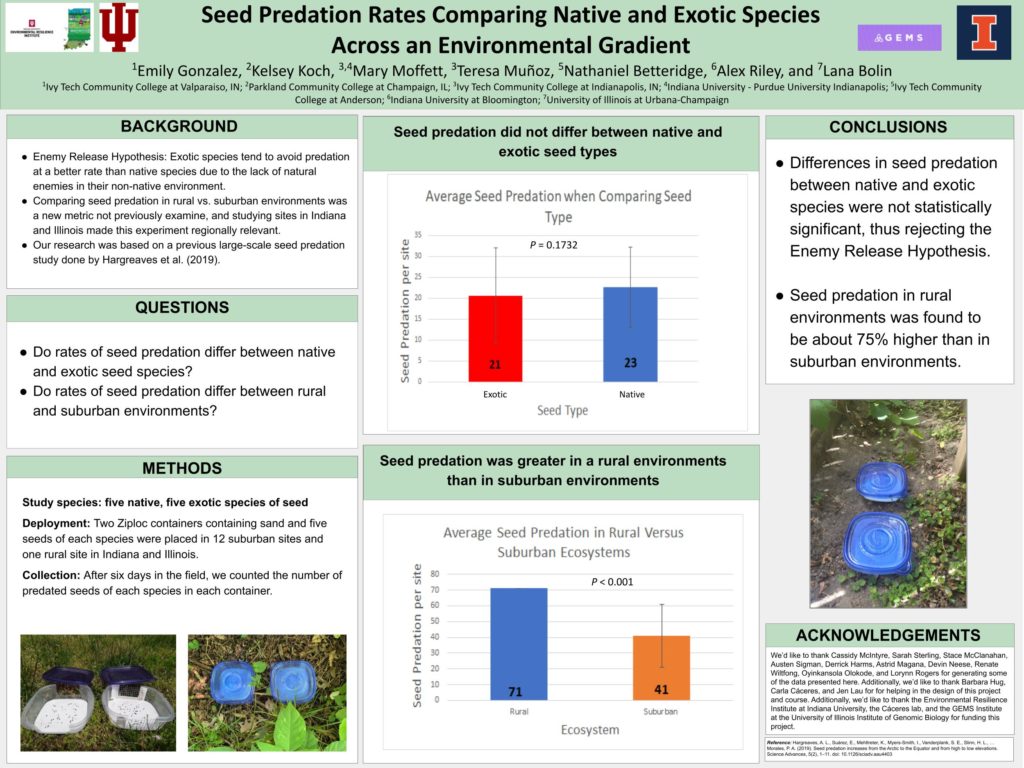Our first Science CORPS distributed experiment combined emerging ideas from urban ecology (how species interactions shift across urbanization gradients) with classic ideas from invasion ecology (the Enemy Release Hypothesis, which posits that invaders escape many of their enemies during the invasion process).
Each student was mailed a science kit containing everything the needed to construct their seed depots and measure seed predation in their back yard or neighborhood park. Students put five seeds of each species into their seed depots and counted the number of remaining seeds six days later.

By including both native and invasive species seeds, the students could answer the question:
Do seed predation rates differ between invasive vs. native species?
Because students lived across Indiana and Illinois, by combining their data they could also ask:
How do seed predation rates vary across rural/urban gradients?
And the exciting results? Science CORPS students found that seed predation was stronger in rural environments than suburban environments, and that seed predation rates did not differ between native and invasive species, which is inconsistent with the Enemy Release Hypothesis.
Check out their poster below!
